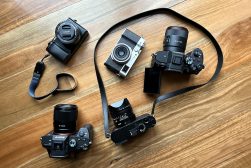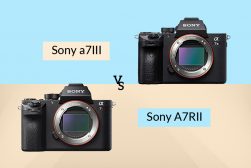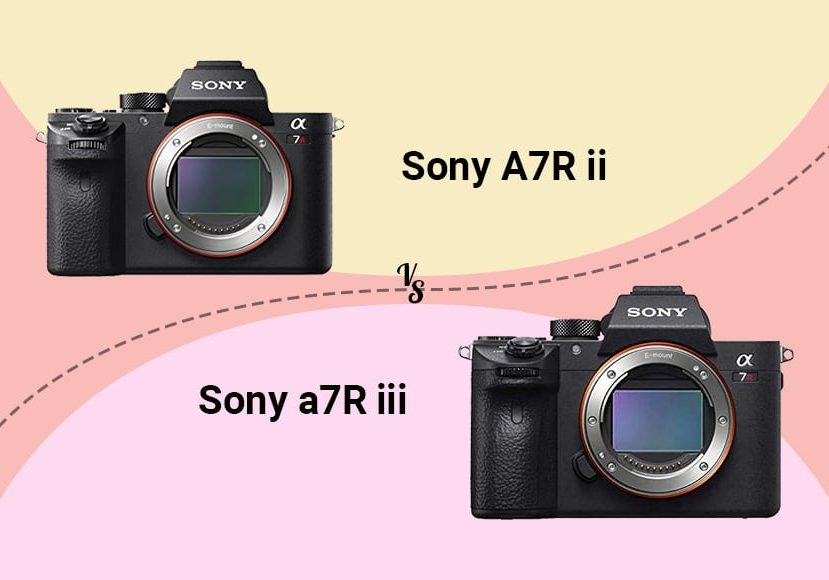
Sony a7R II vs Sony a7R III
Which camera is right for you – the older and cheaper Sony a7R II, or the Sony a7R III? Find out key differences, pros, cons and specs of each in this guide!
If you’re looking to choose between the Sony a7R II and the Sony a7R III, then this guide is exactly what you need.
While both of these camera models have been succeeded by the a7R IV, you can still grab them for a much-reduced price. This means that either one is an excellent option for serious-but-price-conscious photographers.
That said – if it comes to a showdown between the a7R II vs a7R III, which is the better one to buy?
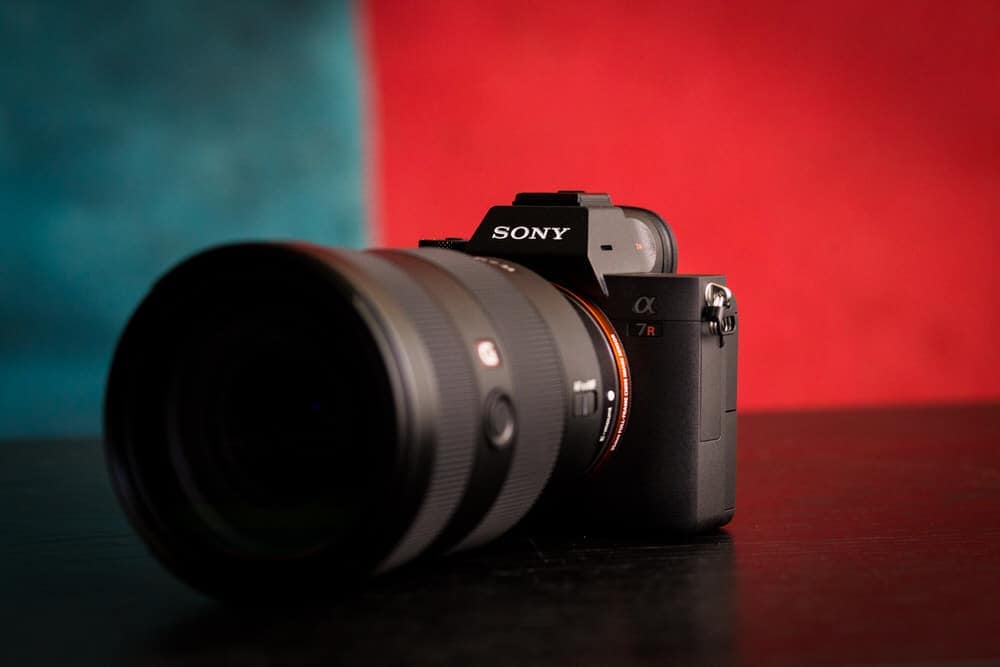
With better handling, exceptional autofocus, and all-round impressive image quality, the A7R III is worth the extra spend.
At first blush, the a7R II and a7R III are more similar than different. Both are full-frame mirrorless cameras. You get identical 42 MP sensors, near-equivalent bodies, and twin 4K video capabilities.
But you’ll also notice some key differences between these models.
Thanks to its upgraded autofocus system, the a7R III is going to appeal as an all-around photography option (for anyone who needs high-resolution capabilities as well as action shooting potential). But it’s still fairly expensive, and could hardly be called a ‘budget camera.’‘
Whereas the a7R II packs the same powerful full-frame sensor at an even lower price but is outcompeted when it comes to AF, ergonomics, and a few additional features.
So which option is right for you?
Let’s take a closer look.
Table of Contents
Sony a7R II vs a7R III | Key Differences
1. Size & Weight
Holding the a7R II and a7R III in your hands, you’d hardly notice a difference.
The Sony a7R III is the slightly heavier model, but not by much, clocking in at 657 g (compared to 625 g for the a7R II).
Note that both of these bodies are relatively light for full-frame cameras, and are going to be lighter and more compact than most full-frame DSLRs (and some APS-C ones, as well).
And speaking of compact, check out the dimensions on both of these bodies:
- 127 x 96 x 74mm on the Sony a7R III
- 127 x 96 x 60.3mm on the Sony a7R II
(See also: differences between a7II vs a7R II.)
In other words, you get the same length and height on the two cameras, though the front grip is noticeably extended on the a7R III (and presumably accounts for much of the extra weight).
As I said above, you’re probably not going to notice the added grams, though the enhanced front grip may improve your shooting experience (as discussed elsewhere in this article).
Overall, both of these bodies are going to be a good option for size and weight-conscious photographers looking to travel, go on long hikes, and more.
2. Rear LCD & EVF
The rear LCD hasn’t had any physical changes from the a7R II to the a7R III.
Both are three inches in size and both tilt, though neither is fully articulating (a gripe worth noting for vloggers, macro photographers, architectural photographers, and videographers).
But you do get two major upgrades on the Sony a7R III:
- A 1.4M-dot screen, versus a 1.23M-dot screen on the Sony a7R II;
- Touch capabilities.
While the boost in resolution won’t make a huge difference, a touch screen can be a key feature for photographers who like to select focal points on the LCD (rather than fiddle around with a joystick or wheel).
I’m a big touch screen fan myself, and using non-touchscreen LCDs is a chore now that my primary cameras contain touch screen functionality.
As for electronic viewfinders:
The a7R II’s EVF is good. It offers nice detail, a 0.78x magnification and, with a resolution of 2.36M-dots, sits toward the middle of the EVF pack.
But the a7R III’s EVF is class-leading, despite its age. Here, you get 3.686M-dot resolution, 0.78x magnification, and a 120 fps refresh rate (the a7R II only offers up to 60 fps).
In fact, only a few mirrorless cameras on the market can top the a7R III regarding EVFs, and one is the a7R IV.
So if you want a near OVF-level shooting experience, the a7R III is an excellent choice.
3. Build & Handling
If you’re investing in a full-frame mirrorless camera, you want to be sure the build quality is up to scratch. So how do these two stack up?
The Sony a7R II and the a7R III are both weather-sealed, and both offer excellent magnesium alloy construction.
This should satisfy all but the most demanding of photographers, and you can feel comfortable taking your a7R II or a7R III into somewhat difficult conditions (though, as with all cameras, you should be careful).
In terms of design and handling, you’re going to see a few small upgrades on the a7R III compared to the a7R II.
First, while both cameras have a fairly nice form-factor, the a7R III has the more pronounced grip, and this is going to make shooting with longer lenses more comfortable. (See also Sony a7 III vs a7R III.)
It should also help out any photographers transitioning from a DSLR camera to mirrorless, or who have bigger-than-average hands.
You also get touch capabilities on the a7R III, which is an excellent way to enhance your autofocus selection; you can tap to choose an AF point, rather than fiddling with buttons.
Plus, you get an AF joystick on the a7R III, whereas the a7R II requires a wheel – and this is nice for those who prefer to work without a touchscreen.

Sony a7R III with the Sony FE 24‑70mm f/2.8 GM (G Master) Lens
Additional features on the a7R III over the Sony a7R II include dual SD card slots – a big one for any photographers who work with clients, as the ability to save a backup of every file is a must-have for many of these shooters.
Note that either camera will give you Wi-Fi connectivity, though the a7R III also has Bluetooth capabilities.
Last, you’re going to get in-body image stabilization (IBIS) on both of these cameras. This is extremely helpful for any photographers that shoot in low-light (I’m talking event photographers, wildlife photographers, sports photographers, and more).
It’s also ultra-important for video shooters, who rely on IBIS for smooth video footage.
But while both models offer in-body image stabilization, you can expect slightly better results on the a7R III (which is rated at 5.5 stops, versus 4.5 on the a7R II).
4. Autofocus
The a7R II’s autofocus system is decent, but nothing spectacular. You’re going to get fast AF-S shooting with still subjects – and while tracking is okay, it’s not going to offer a ton of usefulness for action shooters.
The a7R III’s AF system, on the other hand, is all-around excellent. You get lightning-fast AF-S shooting, but also strong tracking capabilities.
In fact, the upgraded AF system is what really makes the a7R III into a well-rounded camera, as opposed to a specialist high-resolution body for landscape and commercial photographers.
Sure, you can manage okay with the autofocus on the a7R II, but it doesn’t allow for serious action shooting like the a7R III.
(See also: differences between a7sii vs a7rii.)
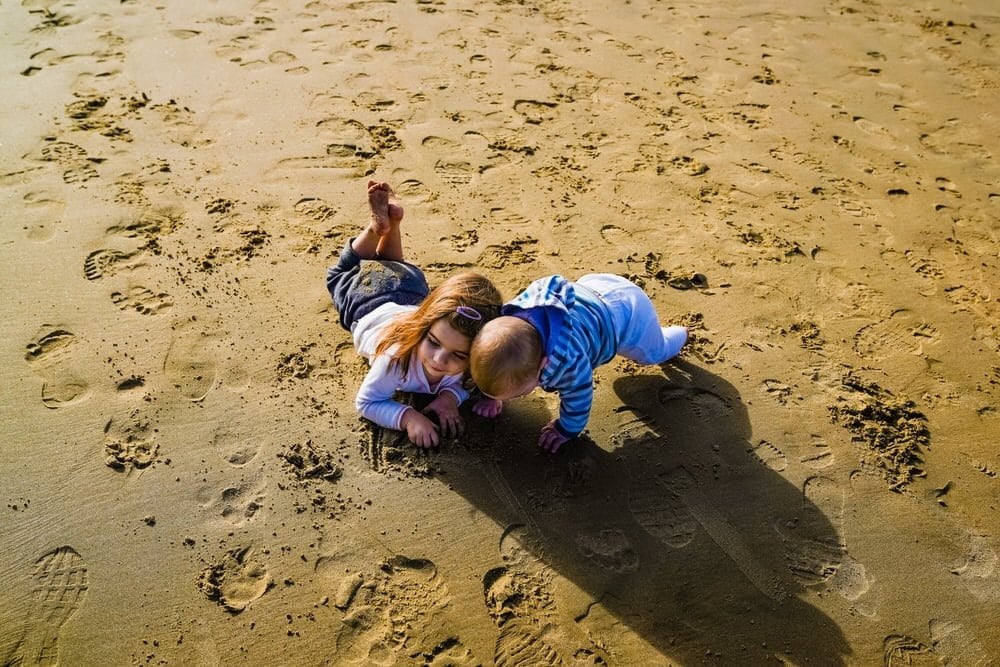
Sony a7R III + Sony FE 24-70mm f/2.8 GM | ISO 50, 24-70 @ 24mm, f/4.5, 1/640 sec | © Daniel Stark
(If you’re interested in specs: The Sony a7R II offers 399 phase-detect AF points and 25 contrast-detect AF points, compared to 399 phase-detect AF points and 425 contrast-detect AF points on the a7R III.)
That’s why the a7R III is a stellar option for anyone who requires a camera with high-resolution capabilities and speedy autofocus performance (something that’s difficult to find on today’s market).
By the way, the a7R III includes (via a firmware update) Sony’s more recent Real-Time Eye AF, which allows you to constantly track eyes with a half-press of the shutter button. This also includes animal eye-AF, which can come in handy for any pet or wildlife photographers out there!
5. Drive (FPS)
The Sony a7R III is just an all-around faster camera compared to the a7R II, and nowhere is that more obvious than when it comes to continuous shooting.
You get 10 frames-per-second on the a7R III, compared to 5 fps on the a7R II.
For the casual photographer, 5 fps is a decent number, and should keep you out of trouble when you’re confronted by the occasional action scene.
But 10 fps is simply excellent, and is good enough for serious sports or wildlife shooting.
Unfortunately, the RAW buffer on the two cameras is a bit disappointing: 28 RAW/76 JPEG on the a7R III, versus 23 RAW/23 JPEG on the a7R II.
But while serious action shooters might wish for a deeper buffer, 28 RAW images should allow you to cover most action scenes without too much trouble.
6. Image Quality
The Sony a7R II and Sony a7R III pack the same full-frame sensor, which means you’re not going to see much in the way of image quality divergence.
First, it’s worth drawing attention to the identical high-resolution megapixel count, because that is going to be the main appeal of these cameras for a lot of folks: 42 megapixels.
If you’re a landscape, commercial, architectural, or macro photographer who just loves to eke out as much detail from an image as possible, or a wildlife photographer who crops like crazy, then these 42 MP will be put to good use.
You do get a Pixel Shift Multi Shoot mode on the a7R III, which captures multiple shots to ensure greater detail and superior colors (though the megapixel count remains the same).
Like most full-frame cameras, these models produce very good high-ISO image quality. Interestingly, the a7R III is slightly improved over its predecessor, thanks to an upgraded processor.
For the a7R II, you have an ISO range of 100-25600; noise is just noticeable at ISO 1600, and gradually increases until images become unusable around ISO 12800.

Sony a7R II | © Benny Jackson
For the a7R III, the range is slightly broader, from 100-32000. Noise isn’t an issue until around ISO 3200, with ISO 6400 staying useable but noise overwhelming images shot past ISO 12800.
Sony is known for the dynamic range of its sensors, and you’re going to see some excellent capabilities on the a7R III in particular: 14.7 stops of dynamic range.
Not that the a7R II performs poorly (its dynamic range is rated at 13.9 stops), but it’s just not on the same level as the a7R III.
Bottom line:
If image quality is your main concern, the a7R III is the better option – but the differences between these two camera bodies aren’t huge, and both cameras offer a lot to be impressed by.
7. Battery Life
The battery life on the Sony a7R II is pretty standard for a mirrorless camera.
In other words, it’s disappointing.
You get just 340 shots when using the LCD (and this drops to 290 shots with the electronic viewfinder activated).
If you’re a professional shooter, this level of battery life means you’ll need to purchase a lot of backup batteries, which don’t come cheap. And even serious hobbyists will want at least an extra battery or two.
Fortunately, the a7R III’s battery life is almost twice that of the a7R II (650 shots with the LCD, 530 shots with the EVF).
While this is far from ideal, it’s going to help you save on at least an extra battery or two.
Plus, longer battery life can be a huge help when shooting in tough conditions (such as during a snowstorm or a rainstorm); you’ll want to open your battery door as infrequently as possible.
8. Video
The Sony a7R II already offered excellent video capabilities when the a7R III came out: 4K/30p capabilities, using either the full sensor width or using a cropped portion of the sensor in Super 35mm mode.
(Note that the full sensor width option uses pixel binning to drop the resolution to 4K, which results in reduced image quality.)
You also get 1080p video capabilities at up to 60 frames per second, as well as S-log recording for improved dynamic range.
When it comes to video specs, the Sony a7R III improves slightly upon the already-excellent a7R II, offering 4K/30p as well as 1080p video recording at up to 120 fps.
Video recording on the a7R III includes the same full-frame and Super 35mm modes described above.
The a7R III also offers an additional S-log option, and both models include mic ports and headphone ports for professional video shooting.
In general, videographers are going to be satisfied by either of these models. If you’re a hybrid shooter who needs high-resolution video and stills, the a7R II is a good, cheap buy – though the a7R III is an even better performer.
9. Price
If you’ve read the entirety of this article, you’re probably tempted by the a7R III.
After all, it’s at least moderately better in every way (other than being slightly heavier) – and a significant upgrade as far as features such as autofocus and continuous shooting are concerned.
But the a7R II stands out for one big reason:
Price.
While the Sony a7R III is significantly cheaper than its successor, at around US$2,800, it’s still a thousand USD more expensive than the Sony a7R II (which can be purchased new for just $1,800).
Sure, you don’t get the same AF capabilities or 10 fps shooting speeds as the a7R III, but for US$1,800 you can have high-resolution files, full-frame image quality, a rugged body, solid video specs, decent AF, and much more.
So for the budget-conscious photographers, the a7R II is the camera to go for.
Sony a7R II vs a7R III | Final Words
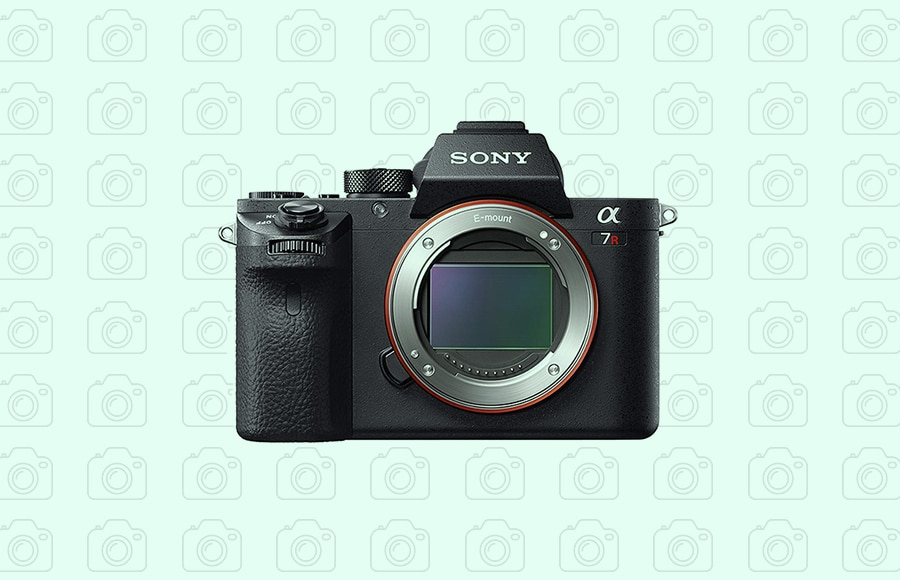
When it comes to the Sony a7R II vs Sony a7R III, it must be said that both are standout cameras when it comes to image quality.
You get some of the highest-resolution files available in 35mm cameras – for under US$3,000.
But while the a7R II wins on price, the a7R III really earns that extra $1,000, outcompeting its predecessor on autofocus, shooting speed, touch capabilities, video, number of card slots, and more.
The a7R III really is a solid all-around camera for professionals, especially those that don’t want (or need) to shell out the $3,500 for a Sony a7R IV.
Meanwhile, the a7R II should be thought of as a cheaper high-resolution camera – one that can stay afloat when it comes to most genres of photography, but can only really excel when dealing with slower-paced commercial, landscape, macro, and architectural photography.
So ask yourself:
Do I need the speed of the a7R III?
If not, and you’d like to keep your budget down, then the a7R II may be the better option.
If you want that bit of extra horsepower and a few more bells and whistles on your new full-frame camera, the a7R III is likely for you.
The choice is yours.

With better handling, exceptional autofocus, and all-round impressive image quality, the A7R III is worth the extra spend.









